As we head into summer, there is nothing better than to marvel at the blossoms on the trees and gardens in full bloom but we can make plans. If you're planning a trip to Ireland consider visiting some of the incredible gardens.
Here is a selection of Ireland’s great gardens, open to the public:
National Botanic Gardens
Botanic Rd., Glasnevin, Dublin 9
National Botanic Gardens.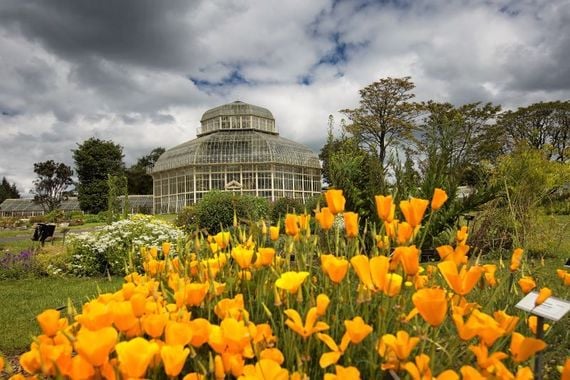
This is Dublin’s floral showcase, with more than 20,000 different plants, a Great Yew Walk, bog garden, water garden, rose garden, student garden, and herb garden.
Established in 1795, the layout also includes a variety of Victorian-style glass houses built to house tropical plants and exotic flowers. Situated on 50 acres of land just two miles north of the city center and easily reachable by Dublin Bus, the gardens also have over 300 endangered species from around the world, and six species already extinct in the wild.
Powerscourt Gardens
Enniskerry, Co. Wicklow
Powerscourt Gardens.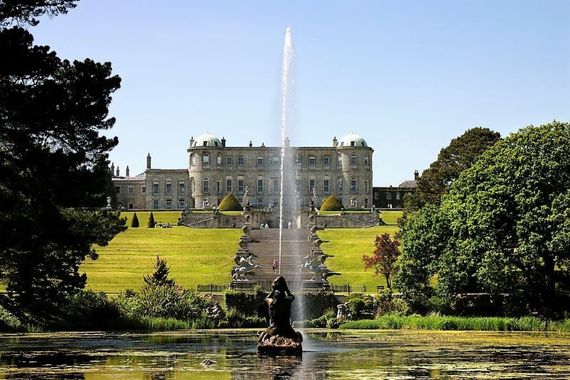
An extraordinary array of 18th-century gardens just 12 miles south of Dublin City, with a backdrop of the Sugarloaf Mountain. The floral layouts have Italian and Japanese themes, plus herbaceous borders, ornamental lakes, splendid statuary, and decorative ironwork. In addition, the grounds hold a pet cemetery, a wildlife park, and a waterfall (the highest in Britain and Ireland) which tumbles down from a 400-foot high cliff. The gardens surround a restored 18th-century house that also provides exhibits, shops and a café with an outdoor terrace overlooking the entire garden landscape. It’s an easy half-day trip from Dublin by bus or car.
Mount Usher Gardens
Off N 11, Ashford, Co. Wicklow
Mount Usher Gardens.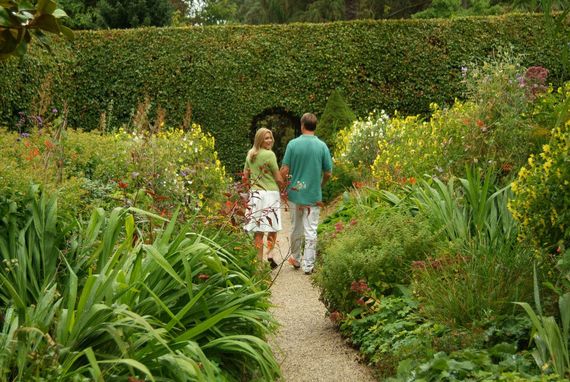
Another “must stop” for garden enthusiasts, en route to or from Dublin. Dating back to 1886, Mount Usher is a 20-acre paradise of over 5,000 types of plants, trees, and shrubs from all over the world, blending familiar species like rhododendrons, magnolias, camellias, eucalyptus, and palms, with the exotic, such as Burmese jumpers, Chinese spindles, and North American swamp cypress. Water plays an essential part of the layout, with cascades and bridges, visible in just about every section.
The Gardens at the Irish National Stud
Tully, Co. Kildare
The Gardens at the Irish National Stud.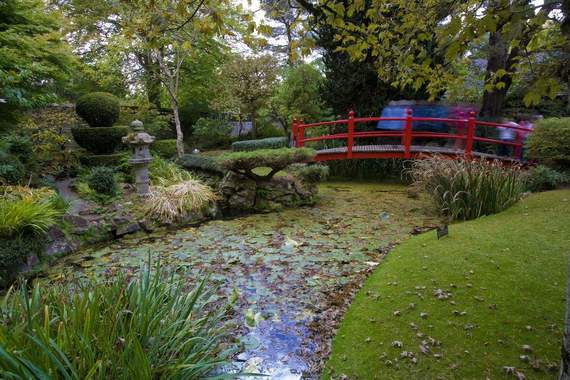
Even if you have minimal interest in horses, it is worth a trip to the Irish National Stud, a sprawling horse farm set on 958 acres of prime grasslands, to walk through the adjacent gardens. The Japanese Gardens, laid out between 1906 and 1910 to symbolize the Life of Man in 20 different stages from Oblivion to Eternity, are considered among the finest in Europe.
The configuration includes cherry blossoms, bonsai trees, and other exotic plantings, as well as a tea house and a miniature Japanese village. The newer garden, known as St. Fiachra’s Garden, is named in honor of the 6th-century Irish monk who is the patron saint of gardeners. Designed to recreate the serene environment that inspired the spirituality of the 6th and 7th-century monastic movement in Ireland, this garden is a natural oasis of woodlands, waterfalls, and wetlands, along with aquatic plants, islands, and greenery of all types.
Bantry House Garden
Bantry, Co. Cork
Bantry House Garden.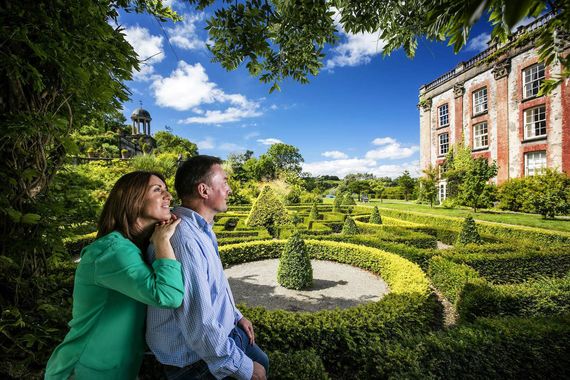
This garden in the southwest Ireland surrounds Bantry House, one of Ireland’s grandest houses built in 1740 for the Earls of Bantry. The gardens are spread on a hillside overlooking Bantry Bay. Walk among the rare flowers, subtropical plants, sculpted shrubs, original statuary and waterfront paths. Climb the steps behind the house for a panoramic view of the house, gardens, and Bantry Bay.

Are you planning a vacation in Ireland? Looking for advice or want to share some great memories? Join our Irish travel Facebook group.
Garinish Island
off Glengarriff, Co. Cork
Garinish Island.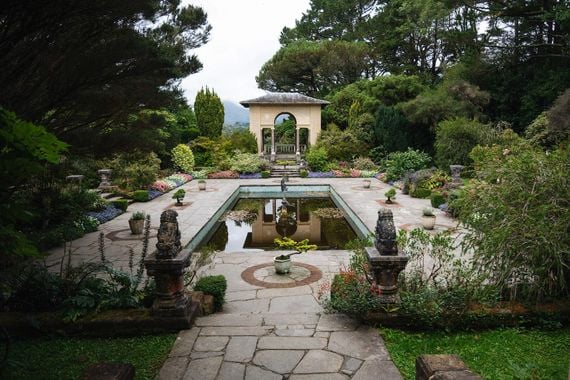
A small garden paradise on a 37-acre island off the West Cork coast. Accessible by local ferry boats from the pier at Glengarriff, it is home to an Italian Garden of rare and tender tropical plants, not usually seen in Ireland or northern Europe. It was here that George Bernard Shaw is reputed to have written part of St. Joan. The paths around the gardens, ideal for strolling, include ponds and pedimented gateways, a Martello tower, and a Grecian temple overlooking the sea. You can easily spend a morning or afternoon here.
Muckross House Gardens
Muckross Rd, Killarney, Co. Kerry
Muckross House Gardens.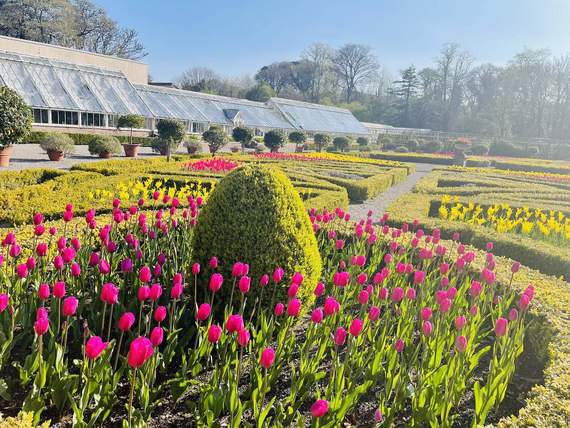
This 18th-century garden surrounds Muckross House, the focal point on the shoreline of Killarney’s Middle Lake. Often called “the jewel of Killarney,” the splendid 20-room Victorian mansion, built in 1843, provides a glimpse of the lifestyle of the landed gentry of Killarney in the 19th century. The well-manicured gardens outside are renowned worldwide for their collections of azalea, roses and rhododendron, as well as a sunken garden, rock garden, stream garden and walled garden.
Birr Castle Gardens
Rosse Row, Birr, Co. Offaly
Birr Castle Gardens.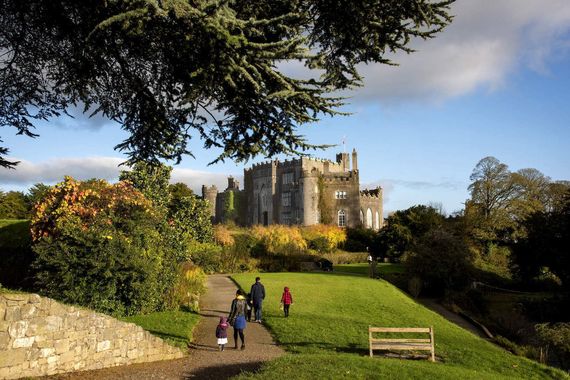
A 100-acre horticultural wonderland in the center of Ireland. The layout contains more than 1,000 species of trees and shrubs, including box hedges featured in the Guinness Book of Records as the tallest in the world. Other facilities include a giant 6-foot reflecting telescope, built in 1845 and the largest in the world for over 70 years.
Kylemore Abbey Gardens
Kylemore, Co. Galway
Kylemore Abbey Gardens.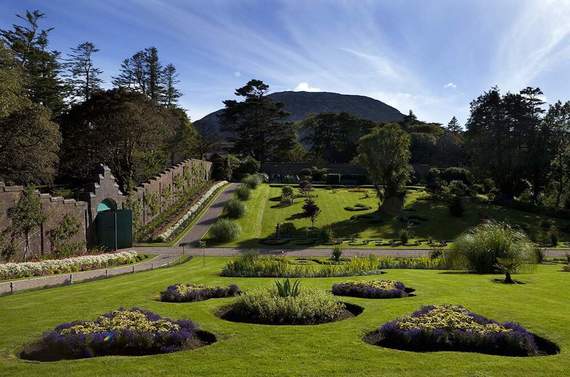
A six-acre walled Victorian garden. Singled out as a winner of a Europa Nosta Award in 2002, this serene lakeside sanctuary was originally laid out in 1867, and took three years to complete, transforming a wilderness of rock and bog into a feast of flowers and plants set in geometrically designed borders and beds, along with hundreds of thousands of trees. Unfortunately, the garden fell into disuse for over 100 years until its recent restoration.
The garden is divided into two sections, a formal flower garden for leisurely strolls and the kitchen garden containing fruit, vegetables and herbs. In addition, the former Head Gardener’s House has been turned into a mini-museum as has the Garden Bothy (workman’s house). The Tool Shed is also on view and shows examples of tools used in the Victorian era and small treasures uncovered during the garden renovations. A shuttle bus connects the gardens to Kylemore Abbey.
Brigit’s Garden
Off N 59, Pollagh, Roscahill, Connemara, Co. Galway
Brigit’s Garden.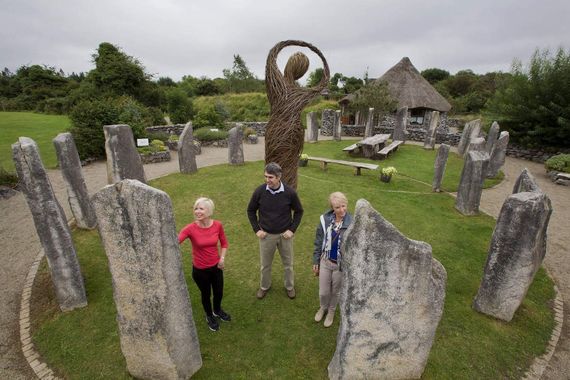
A serene and off-the-beaten-path 11-acre garden reflecting Celtic festivals, with wildflower meadows, nature trails, woodlands and meadows and Ogham trees. There is also a thatched roundhouse, ring fort and stone chamber, as well as a unique calendar sundial, at 50 feet in diameter, said to be the largest of its kind in Ireland. It’s a lovely respite from a busy day of touring.
Glenveagh National Park Gardens
Churchill, Letterkenny, Co. Donegal
Glenveagh National Park Gardens.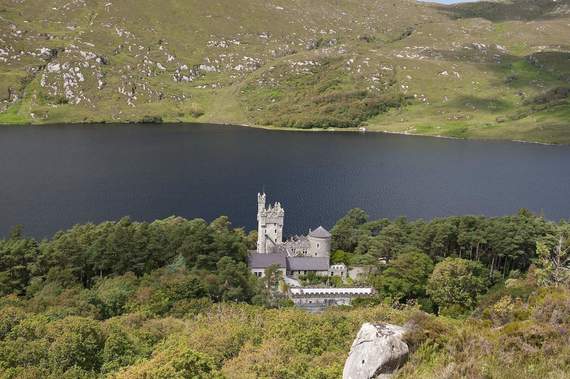
A focal point of one of Ireland's finest national parks, these gardens were planted in the 19th century and include a rich variety of exotic and rare plants from as far away as Tasmania, Madeira, and Chile. In addition, there are themed sections such as the Belgian Walk, Swiss Walk, Italian Garden, Rose Garden, View Garden, and Vegetable Garden with edible and ornamental vegetables. There are also a variety of nature trails and a lush habitat for wildlife including the largest red deer herd in Ireland and rare Golden Eagles who were re-introduced to the parklands in 2001.
Mount Stewart Gardens
Portaferry Rd., Newtownards, Co. Down
Mount Stewart Gardens.
Set overlooking Strangford Lough on the Ards Peninsula, these gardens surround an 18th-century neo-classical house, originally known as Mount Pleasant. The gardens were created in the 1920s and are considered to be the leading plant collection and garden in Northern Ireland. The layout includes topiary and formal gardens (sunken garden, shamrock garden, peace garden, terraces, Italian and Spanish gardens) plus various walks, a rhododendron hill, lily wood and a temple of the winds.
Botanic Gardens Belfast
University Rd. and Stranmillis Rd, Belfast
Botanic Gardens Belfast.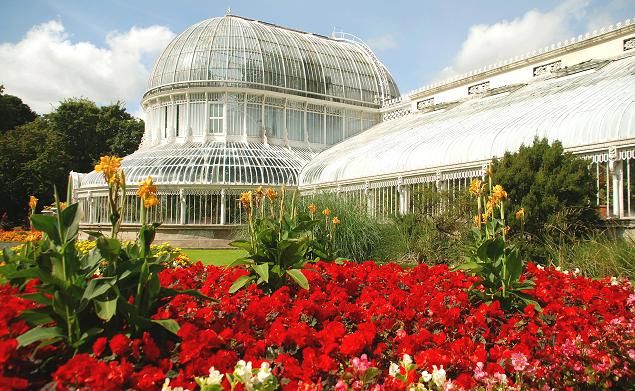
Established in 1829, this 28-acre setting is known for its rose garden and herbaceous border sections, as well as an alpine garden, bowling green, giant bird feeders, rockery, specimen trees and sculptures. The grounds include two unique buildings – the Palm House, a curvilinear cast-iron glasshouse, containing exotic palms and other delicate plants from around the world; and the Victorian-style Tropical Ravine, sheltering exotic warm weather ferns and jungle plants, such as banana, cinnamon, and orchid.
* Originally published in 2014, updated in May 2023.
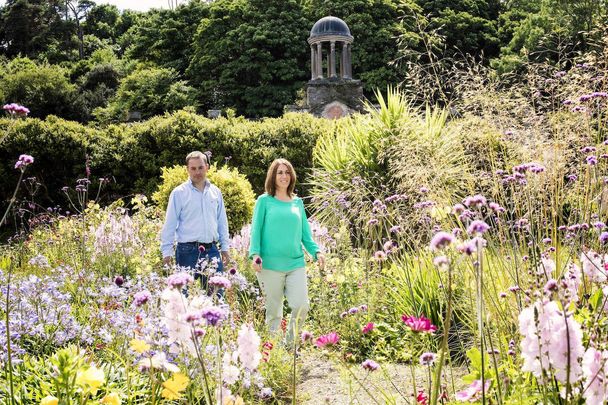



Comments